Abstract
1. The field potential profile resulting from electrical stimulation of the optic nerve-head was recorded with micro-electrodes inserted radially into the pigeon optic tectum.
2. The first response, in the superficial tectum, was a graded negative wave, the N-wave. Its latency was 2·3 msec, S.D. 0·22 msec. The wave form underwent an abrupt polarity reversal in the R-zone, to yield a graded positive wave, the P-wave, in deeper laminae. The P-wave had a latency of 2·0 msec, S.D. 0·16 msec.
3. Both N-wave and P-wave showed a graded increase in amplitude as stimulating current was increased. On any given track this increase occurred over a similar range of stimulating current.
4. In many tracks the rise-time and duration of the N-wave were independent of amplitude.
5. The rise-time of the P-wave was longer, and its duration was shorter, than the rise-time and duration of the N-wave. This effect was shown to be due to two successive sinks occurring superficially to the P-zone.
6. Depth profiles also showed these two sinks, separately located in the N-zone and R-zone.
7. To paired stimuli the N-wave showed refractoriness at intervals of 2-4·5 msec, facilitation at intervals up to 25 msec, and subsequent depression. It showed low-frequency depression at 10 and 20/sec.
8. The R-zone was localized by a lesion technique to sub-layers d to g of the stratum griseum et fibrosum superficiale. Thus the tissue negativity was closely co-extensive with the anatomical distribution of optic nerve terminals.
9. It is suggested that the N-wave is the sink of excitatory synaptic potentials produced in the superficial tectum, and predictions relating unitary firing to the field potential profile are made.
Full text
PDF
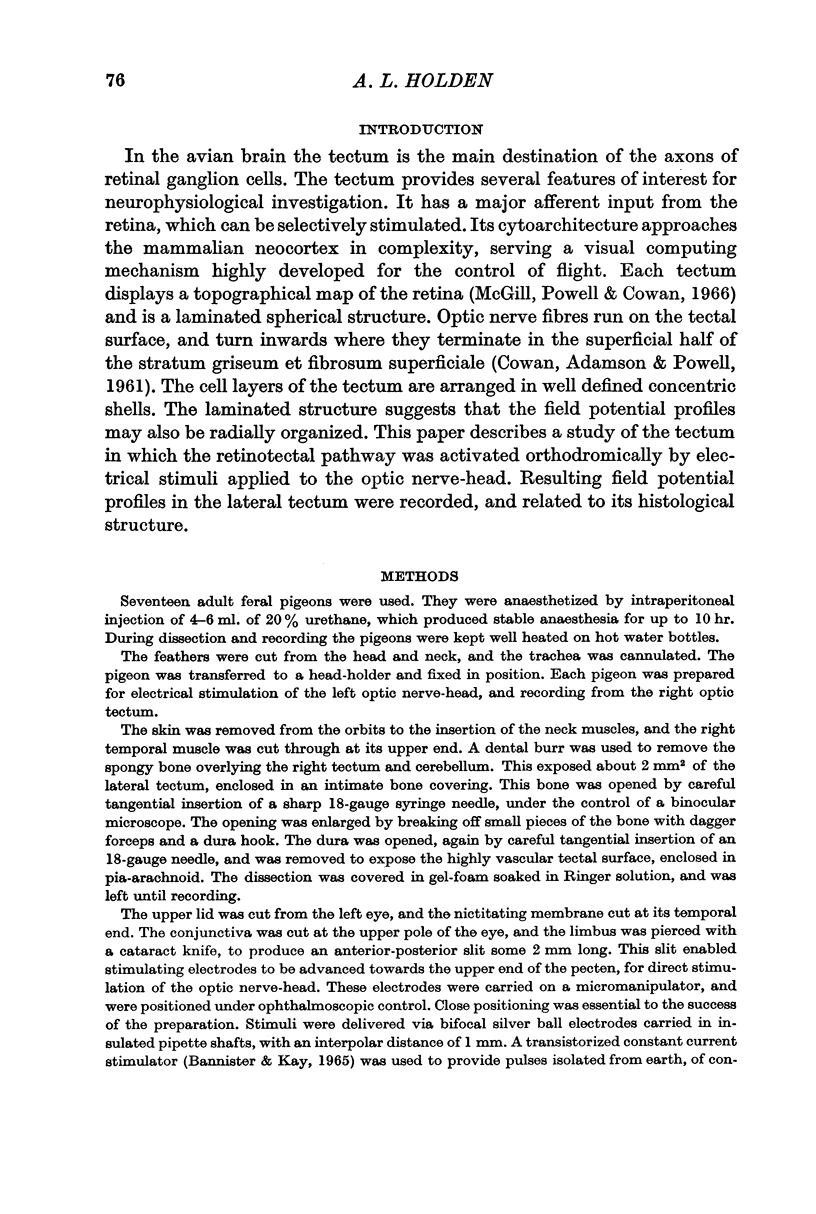
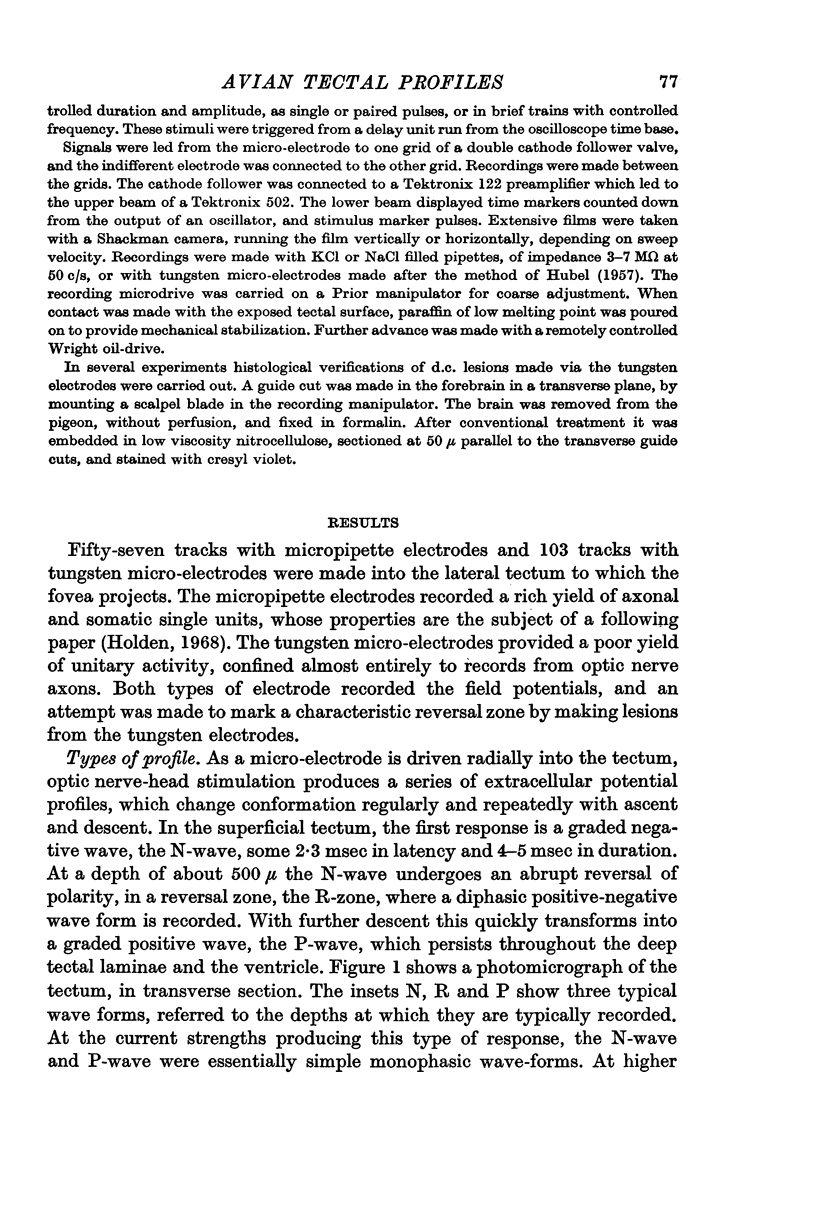
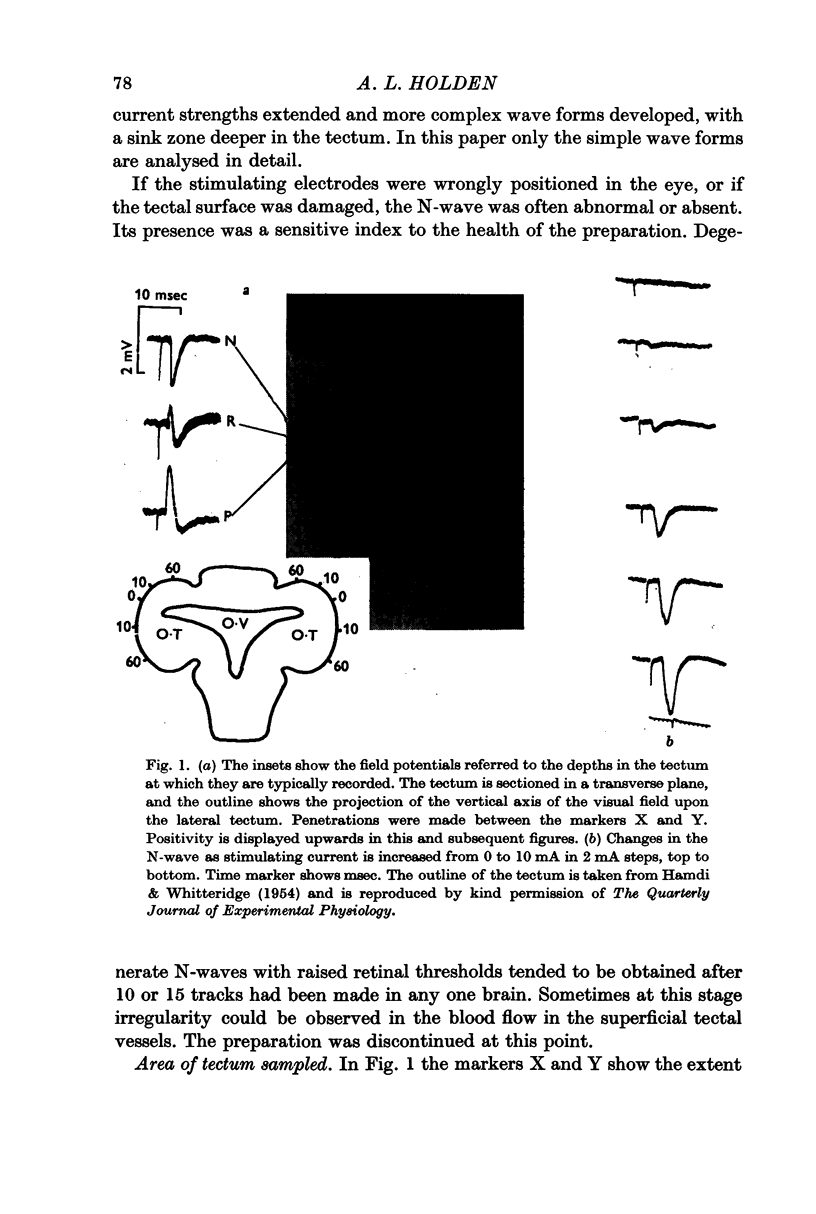



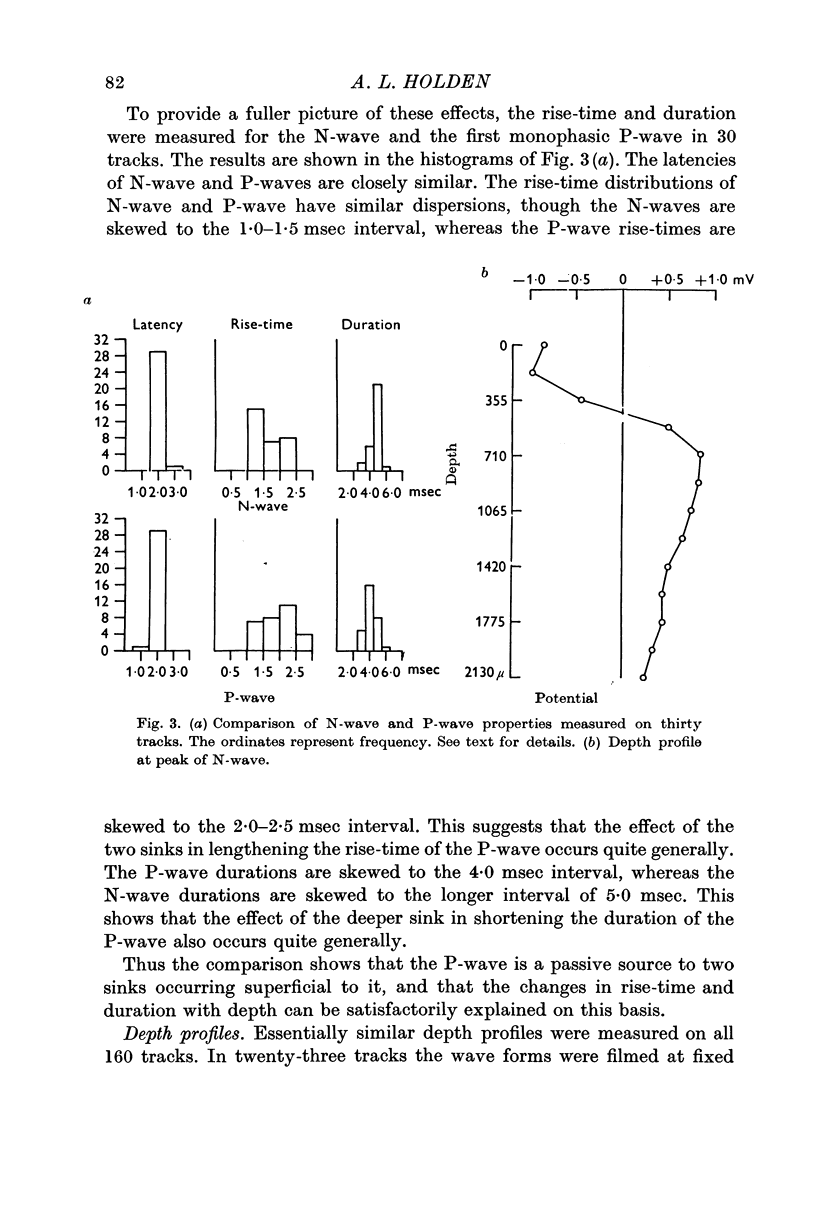
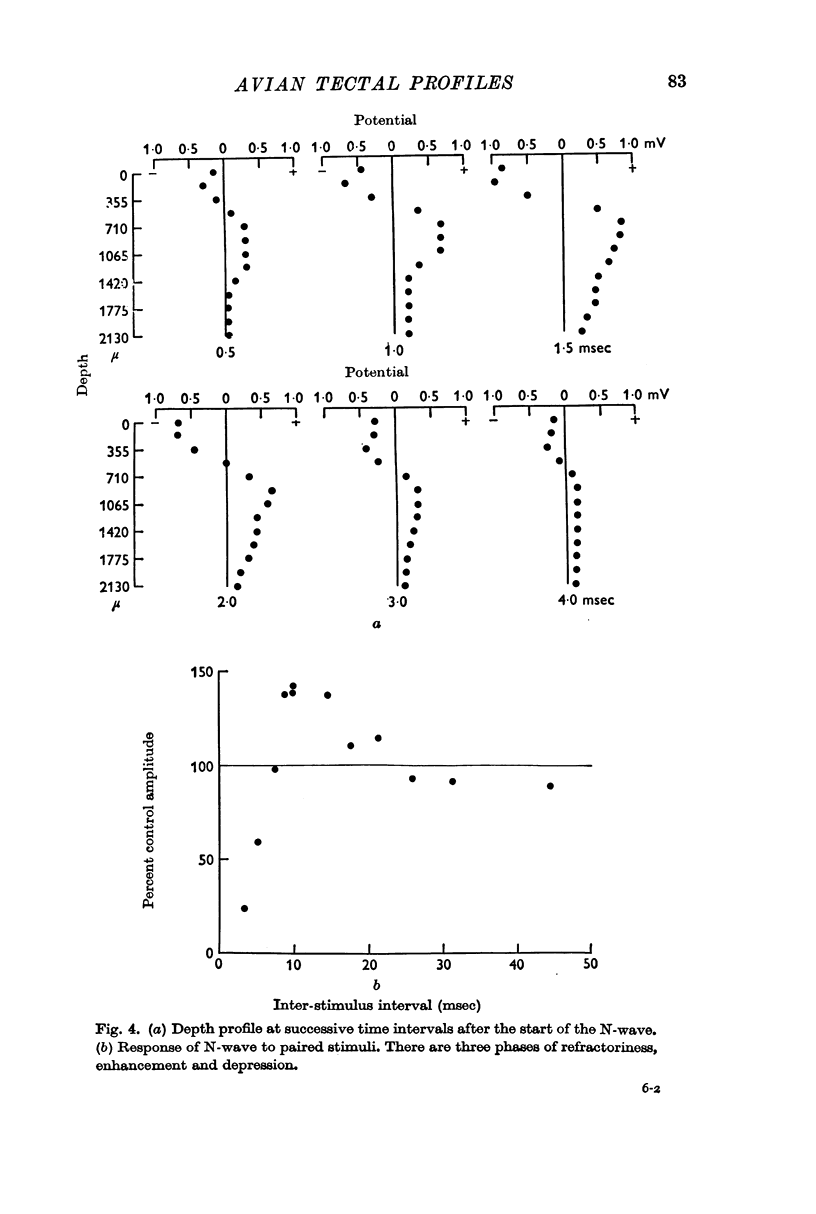







Images in this article
Selected References
These references are in PubMed. This may not be the complete list of references from this article.
- COWAN W. M., ADAMSON L., POWELL T. P. An experimental study of the avian visual system. J Anat. 1961 Oct;95:545–563. [PMC free article] [PubMed] [Google Scholar]
- HAMDI F. A., WHITTERIDGE D. The representation of the retina on the optic tectum of the pigeon. Q J Exp Physiol Cogn Med Sci. 1954;39(2):111–119. doi: 10.1113/expphysiol.1954.sp001053. [DOI] [PubMed] [Google Scholar]
- HARA T. J., UEDA K., GORBMAN A. INFLUENCES OF THYROXINE AND SEX HORMONES UPON OPTICALLY EVOKED POTENTIALS IN THE OPTIC TECTUM OF GOLDFISH. Gen Comp Endocrinol. 1965 Jun;5:313–319. doi: 10.1016/0016-6480(65)90055-9. [DOI] [PubMed] [Google Scholar]
- Holden A. L. Types of unitary response and correlation with the field potential profile during activation of the avian optic tectum. J Physiol. 1968 Jan;194(1):91–104. doi: 10.1113/jphysiol.1968.sp008396. [DOI] [PMC free article] [PubMed] [Google Scholar]
- Hubel D. H. Tungsten Microelectrode for Recording from Single Units. Science. 1957 Mar 22;125(3247):549–550. doi: 10.1126/science.125.3247.549. [DOI] [PubMed] [Google Scholar]
- KATZ B., MILEDI R. THE MEASUREMENT OF SYNAPTIC DELAY, AND THE TIME COURSE OF ACETYLCHOLINE RELEASE AT THE NEUROMUSCULAR JUNCTION. Proc R Soc Lond B Biol Sci. 1965 Feb 16;161:483–495. doi: 10.1098/rspb.1965.0016. [DOI] [PubMed] [Google Scholar]
- McGill J. I., Powell T. P., Cowan W. M. The retinal representation upon the optic tectum and isthmo-optic nucleus in the pigeon. J Anat. 1966 Jan;100(Pt 1):5–33. [PMC free article] [PubMed] [Google Scholar]
- POWELL T. P., MOUNTCASTLE V. B. Some aspects of the functional organization of the cortex of the postcentral gyrus of the monkey: a correlation of findings obtained in a single unit analysis with cytoarchitecture. Bull Johns Hopkins Hosp. 1959 Sep;105:133–162. [PubMed] [Google Scholar]





